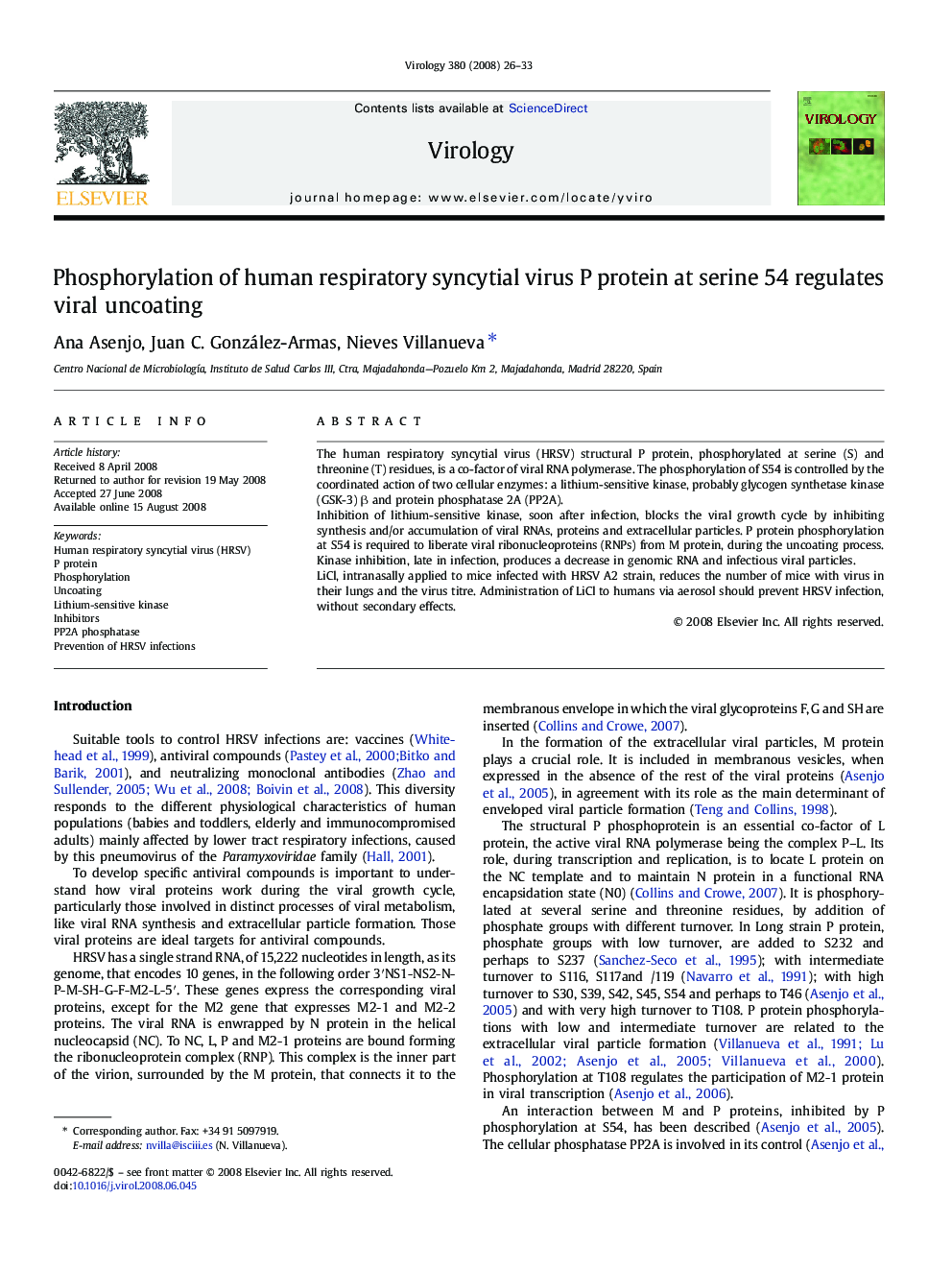| Article ID | Journal | Published Year | Pages | File Type |
|---|---|---|---|---|
| 3425843 | Virology | 2008 | 8 Pages |
The human respiratory syncytial virus (HRSV) structural P protein, phosphorylated at serine (S) and threonine (T) residues, is a co-factor of viral RNA polymerase. The phosphorylation of S54 is controlled by the coordinated action of two cellular enzymes: a lithium-sensitive kinase, probably glycogen synthetase kinase (GSK-3) β and protein phosphatase 2A (PP2A).Inhibition of lithium-sensitive kinase, soon after infection, blocks the viral growth cycle by inhibiting synthesis and/or accumulation of viral RNAs, proteins and extracellular particles. P protein phosphorylation at S54 is required to liberate viral ribonucleoproteins (RNPs) from M protein, during the uncoating process. Kinase inhibition, late in infection, produces a decrease in genomic RNA and infectious viral particles.LiCl, intranasally applied to mice infected with HRSV A2 strain, reduces the number of mice with virus in their lungs and the virus titre. Administration of LiCl to humans via aerosol should prevent HRSV infection, without secondary effects.
